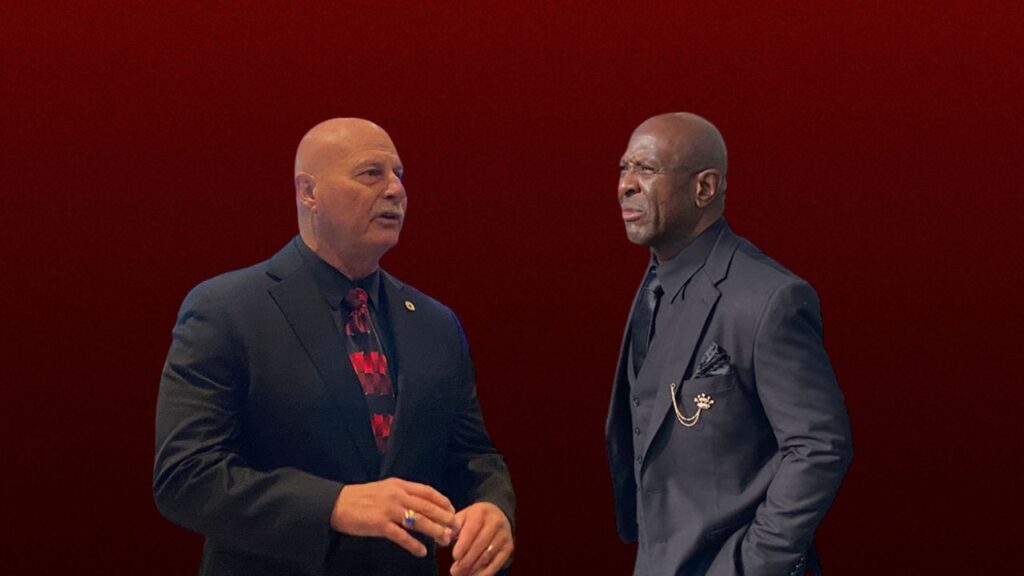Share
Fresno Unified officials say the distance learning program provided to its 74,000 students starting just three weeks from now will be markedly different than the one in the final two months of the past school year.
But details about what school will look like while students are learning virtually are still under wraps. District spokeswoman Nikki Henry told GV Wire℠ on Tuesday that the plan will be released “as soon as negotiations are finalized.”
The Fresno Teachers Association, which represents district teachers, presented a lengthy list of questions on its Facebook page late last week that it hopes will be answered in the “eLearn at My School” plan the district says it’s developing in cooperation with labor partners.
Among the union’s queries:
- What happens if a student doesn’t attend class and the parents don’t respond to outreach attempts?
- How much time will be scheduled at the beginning of the school year for building relationships? (Unlike other school years, teachers and students won’t start out together in the classroom.)
- Will teachers be reimbursed for additional bandwidth costs?
- Will the district purchase microphones or cameras for teachers to deliver distance learning?
Delay Start of School?
With so much yet to prepare for, the FTA has been pushing to delay the start of the school year past Aug. 17 so teachers, principals, other school staff, parents, and students can be more fully prepared for distance learning.
Although the first day of school for students is Aug. 17, principals and teachers report a week or two earlier and will need to be versed in how to present distance learning, said FTA President Manuel Bonilla.
“We need to have time to make sure everybody is on the same page,” he said.
Bonilla said district officials should have gotten started earlier on the plan since distance learning was always going to be an option even as the district was preparing earlier in the summer to reopen schools.
That back-to-school option was waylaid by a mandate announced this month by Gov. Gavin Newsom that keeps schools closed if they are in counties that are on the state’s COVID-19 watchlist for rising infection rates.
Plan Needs to Make Time for Parents
Parent Carmen Zamora hopes that the district’s plan will include scheduled time for regular teacher-parent conversations.
“Hopefully, they do take into consideration we as parents need a lot of support, even one-on-one time with teachers,” she said. “We want to make sure we’re doing what we’re supposed to be doing, because we don’t want our kids to fall behind.”
The state has outlined a series of requirements for districts for the new school year, including “daily live interaction” with instructors and a minimum of three hours of daily instruction for kindergartners, three hours and 50 minutes for students in grades 1 through 3, and four hours for students in grades 4 through high school.
What’s not clear is how much of that instruction could be synchronous — or real-time — versus asynchronous (such as recorded instruction), or for time spent off-line on projects or assignments, Bonilla said.
What Will Online Instruction Look Like?
The district had originally set a deadline of Friday for parents to sign their children up for the online-only curriculum for the school year.
Now that all students are on the distance learning format to start the school year, registration is requested only from parents who need a device for their child and who also want their children to remain with distance learning after schools reopen, district spokeswoman Amy Idsvoog said.
Part of the negotiations between the teachers union and district have centered on what platforms can be used for instruction. While some teachers prefer Zoom, the district is insisting on Microsoft Teams, in part because it is more secure than Zoom and also because it includes the types of attendance and instruction time analytics that schools are required by the state to compile.
Security is a big issue for schools, said Kurt Madden, the district’s chief technology officer, pointing to the profane rants that interrupted several recent Fresno City Council meetings on Zoom.
Making up for Lost Learning
The teachers union wants to help shape how the district spends $23 million in money designated to mitigate for learning losses and has suggested it could be used to buy districtwide software licenses for programs that will help teachers connect with their students, Bonilla said.
Fresno Unified spokeswoman Vanessa Ramirez said the $23 million will be spent on technology such as devices and connectivity ($5 million to $6 million), personal protective equipment and sanitation supplies ($5 million to $7 million), and direct instructional supports to students ($10 million to $14 million). The estimated expenditures are subject to change, she said.
Ramirez said direct instructional supports include providing support for students’ mental health and social-emotional health and helping English learners, foster youth, and homeless students overcome barriers.
Zamora said she’s encouraged by the open communication she’s already seeing with district staffers and hopes it will continue in the new school year.
She knows there will be challenges, however.
“It will be bumpy. But hopefully we will all work together to be successful.”



















